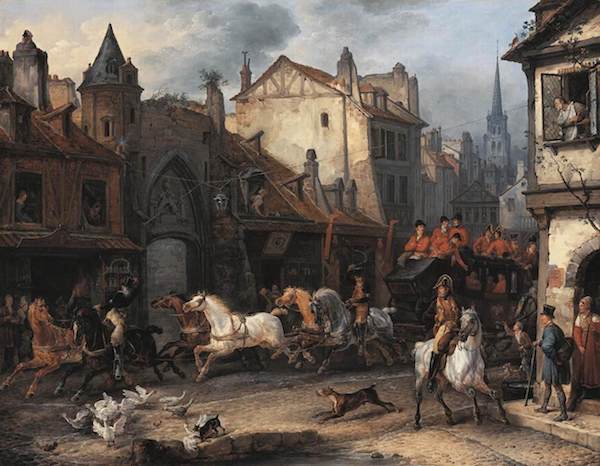
In a post that is now a few years old, we wrote that the German word “pinscher” has a few interpretations, including “terrier,” and “clipped,” from the word, “Pinsch” (in reference to “clipped” ears). We’ve since come across another translation, and that is a Germanic form of the French word ‘pincer,’ meaning to seize or to nip.” With regards to the German Pinscher, this isn’t an allusion to a nasty temperament, but to the breed’s ferocity in biting its quarry. One of Germany’s oldest breeds, and the prototype of other pinscher breeds, seizing and nipping was the German Pinscher‘s raison de vivre: To dispatch rats and other vermin. This robust little dog with a strong prey drive has been recorded in dog books as early as 1884, but a painting by Frenchman, Malers Vernet suggests that the German Pinscher has been in existence since around 1780 (the painting seen here, “Return from the Hunt” by Carle Vernet also includes what some believe are German Pinschers).
The breed was officially recognized in German in 1879, and the German Pinscher-Schnazuer Club looked after the interests of the “Smooth Haired Pinscher” as the breed was known then, though both smooth (pinscher) and coarsehaired (schnauzer) pups were born in the same litters. To help set breed uniformity and make the breed distinctly unique unto itself from the Schnauzer, the club required proof of three generations of pure smooth coats for registration, and this quickly set type.
Image: By Carle Vernet – Web Gallery of Art: Image Info about artwork, Public Domain, https://commons.wikimedia.org/w/index.php?curid=15399047
